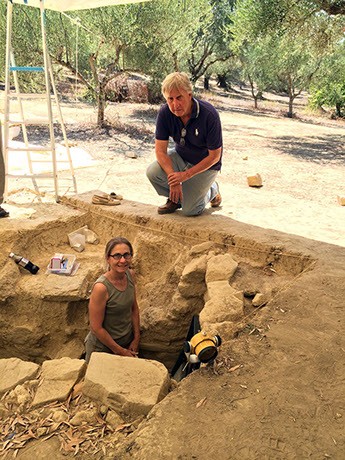On the day before Greek Independence Day, commemorating the start of the Greek Revolution on March 25, 1821, ca. 100 Greek American Cincinnati residents met for a day of remembrance of the so called Population Exchange following what in English is referred to as the Greco-Turkish War, lasting from 1919 to 1922 and ending with a treaty, the Treaty of Lausanne, signed by Greece and Turkey and also by Britain, France, Italy and others in 1923, establishing the current borders of Turkey and Greece, and stipulating the relocation of ca. 1.2 million Christian Orthodox Turks to Greece and ca. 400,000 Muslim Greeks to Turkey, upending the lives of so many who had never known any other country than the one in which they had been raised and the language they had spoken from birth.
Continue readingTag Archives: Classics Library
Celebration of Peter van Minnen, John Miller Burnam Professor of Classics
Classicists and supporters gathered en masse on Tuesday, February 20, to celebrate the work of Peter van Minnen, John Miller Burnam Professor of Classics and world-renowned papyrologist.
Continue readingShe-Wolf Exhibition in the Burnam Classics Library, November 3
Place: Eden Park and the John Miller Burnam Classics Library, UC.
When: November 3. 1. Dedication ceremony in Eden Park at 10:00 am; 2. Exhibition in the Burnam Classics Library after the ceremony.
Exhibition and Dedication Ceremony: In connection with the dedication of the new She-Wolf nursing Romulus (the eponymous founder of ancient Rome) and Remus in Eden Park on November 3, 2023, at 10:00 am (rescheduled from October 20), the John Miller Burnam Classics Library is hosting an exhibition featuring ancient texts about the story underlying the statue, Roman original coins depicting the scene, and photos and a video of the making of the new statue in Tuscany, Italy, before its transport to Cincinnati, and posters with newspaper clippings and other historical materials from the late 1920s and early 1930s concerning the gift of the statue to the City of Cincinnati, the gifting of a “wrong” baby wolf, the explanation of its location in Eden Park, and much more.
Parking: Please plan to visit the Burnam Library after the dedication ceremony. Parking in Cincinnati is always an issue because there are few public transportation options. For the dedication ceremony, plan to arrive at 9:30 am and park at the Krohn Conservatory and walk to Eden Park. For the exhibition, look for parking along Straight Street opposite the Blegen Library building and above, i.e., south of, McMillan Street at the top of Clifton Avenue. There is also metered parking along Clifton Avenue.
Lemonade: Will be served outside the Blegen Library building if it’s a sunny day; inside the lobby if it rains. While enjoying a glass of lemonade, note the Lupa with twins on a relief on the pylon beneath the roof and above the outside entrance to the Blegen building from the 1930s, inspired by the Eden Park statue, which in turn was modeled on a statue now housed in the Capitoline Museums in Rome, Italy.
Continue reading“An Evening with Seneca,” October 5, 4:00-6:15 pm
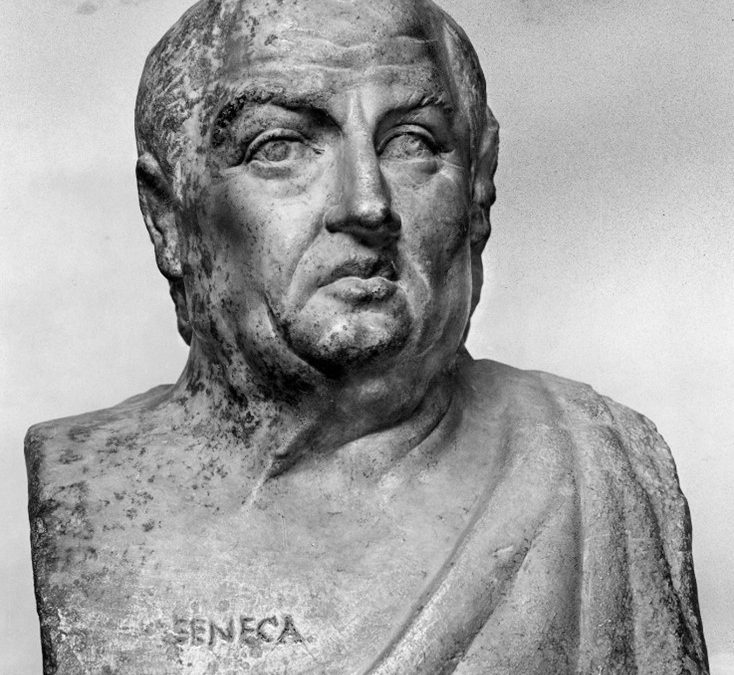
- After a hiatus because of a pandemic, the John Miller Burnam Classics Library is poised to host its third annual author celebration. The honoree this year is Seneca the Younger, author, politician, and Stoic philosopher. We aim to vary the format each year adapted to the author honored. With that in mind, this year we have organized a panel with leading experts on Seneca (James Romm, Bard, Gareth Williams, Columbia, Christopher Trinacty, Oberlin) discussing the curious case of a man promulgating a philosophy of mindfulness and reason while seemingly condoning the murderous behavior of a madman, Emperor Nero, whose advisor and amicus he was.
- The panel is followed by a presentation of an interdepartmental group of undergraduate students and their participation in an experiment entailing living like a Stoic for one week.
- As usual, there will be a music performance, this time with chamber music, and, also true to tradition, under the leadership of Yo Shionoya, a DMA candidate at CCM and long-time student worker in the Classics Library, who has chosen to perform works by Dmitri Shostakovich, a composer who had to balance his creative voice with the demands of another madman, Joseph Stalin.
- Also, as customary, there will be an exhibition featuring rare books, this time of the works of Seneca from the 16th and 17th centuries (below is a 1651 edition of his philosophical works), an incunabulum of the works of Tacitus, a chief source for the life of Seneca,
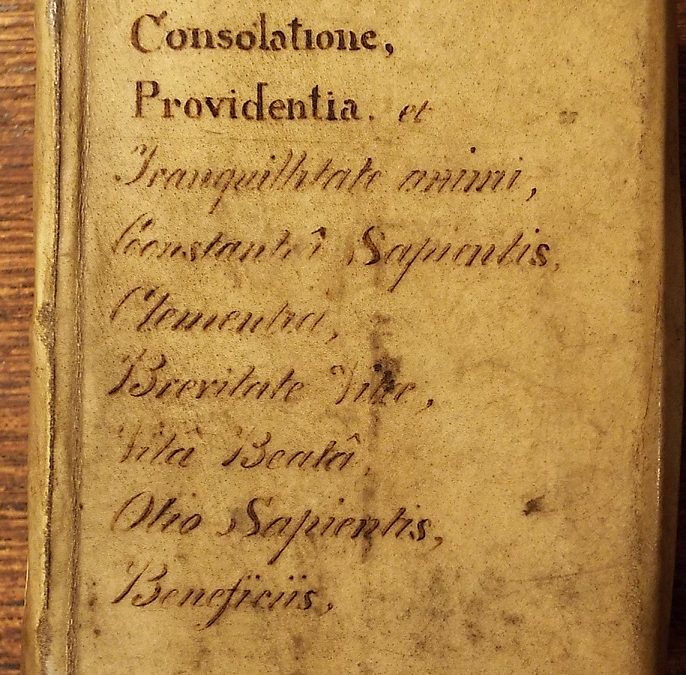
an original copper coin of Emperor Nero (the copper as below from 65 CE of Nero on the obverse and the closed door to the temple of Janus, symbolizing peace, on the reverse. The phrase S[ENATVS] – C[ONSVLTO on the reverse shows that the issuing of money was still the prerogative of the Senate),
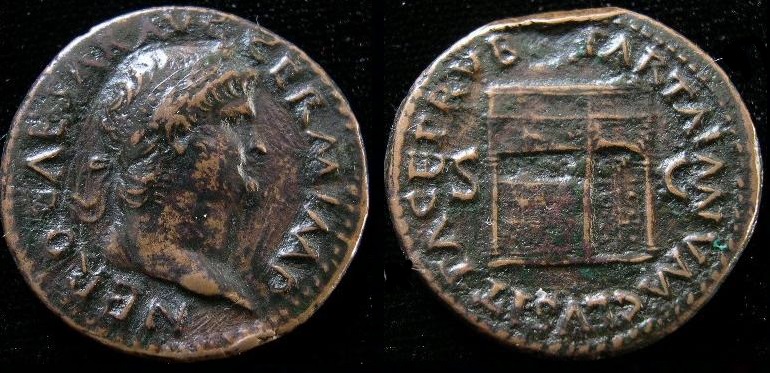
and a reception serving Mediterranean appetizers.

- For a special treat, Professor Romm will be signing his best-seller, Dying Every Day: Seneca at the Court of Nero.
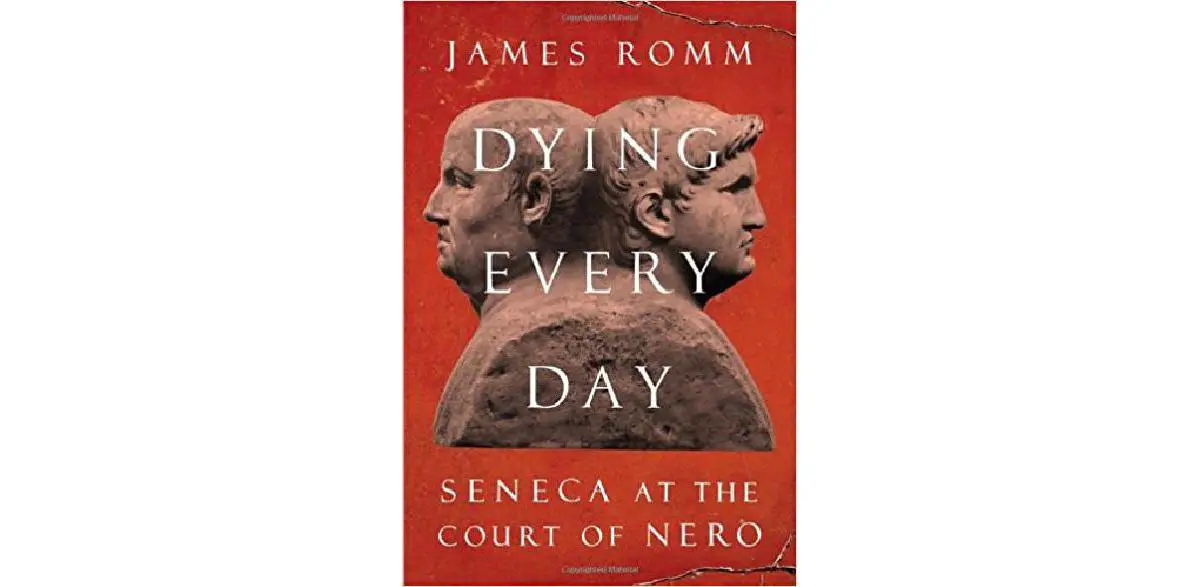
Place: Reading Room, John Miller Burnam Classics Library, Blegen Library building, 2602 University Circle, off of Clifton Ave.
Date: October 5, 2023
Time: 4:00 – c. 6:15 pm
For additional details, please download the program, flyer, and post below.
Welcome Classics Students to Fall Semester 2023!
Please see a very brief overview of the John Miller Burnam Classics Library to prepare for the much more extensive in person orientation on August 18. See you soon!
The Classics Librarian
Classicists — Burnam Library Updates and Happy Summer!
Happy Summer and congratulations to all our new graduates, not the least our new PhD’s this spring, Sarah Wenner, Cecilia Cozzi, Duccio Guasti, and Andrew Lund, and MA’s, Charlie Kocurek and Dalton Davis!
Please see the Classics Library Newsletter (link below) recounting several new and interesting undertakings, especially the many digitized items, and their descriptions and histories in the new Book Tour and much more. Happy Reading!
Spring Semester 2023 Classics Library April 28
The 2022 Papyrology Summer Institute at UC
While many are enjoying summer break, the classics library remains open to visiting scholars and others. This summer, world-renowned papyrologist UC Professor Peter van Minnen has been hosting the Papyrology Summer Institute, held under the auspices of the American Society of Papyrologists. This 5 week-long intensive program has comprised lectures on topics such as petitions, magical papyri, materiality (the archaeology of papyri as objects) by scholars from all over the world in the morning or research and readings in the library followed by examination of papyri on loan from the University of Michigan in the lab (Blegen 320) in the afternoon. Some of the participants could already read Egyptian hieroglyphs, Coptic, and Demotic coming into the program, and all could read Greek and Latin. Each participant works on 3-4 papyri. Their findings are subsequently published in the Bulletin of the American Society of Papyrologists. In addition to the papyri, each participant examines one ostracon (a piece of pottery with writing on it), the publication of which will be as a group.
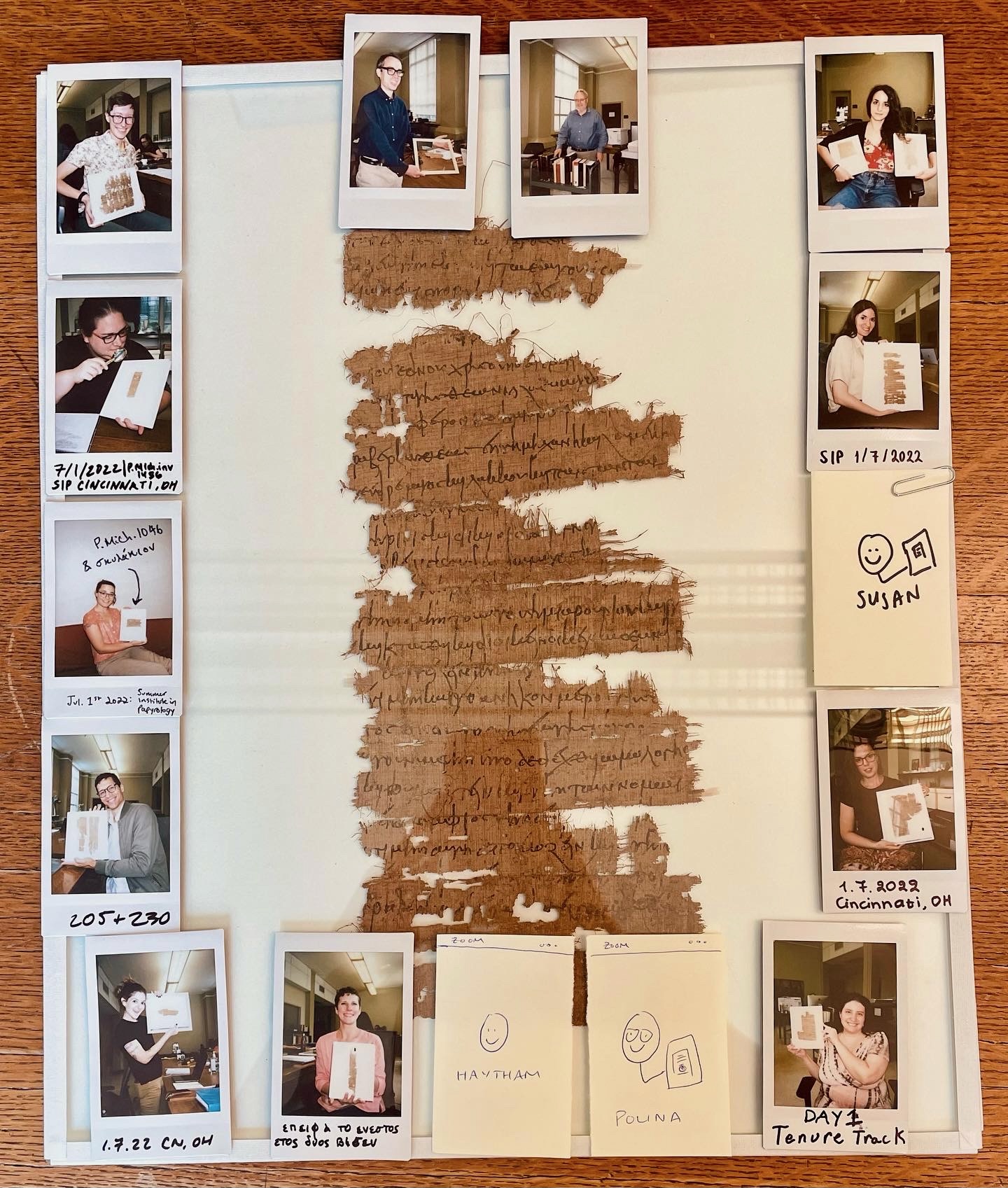
Polaroid collage of participants in the 2022 Papyrology Summer Institute at UC by one of the participants, Dr. Ella Karev, Postdoctoral Teaching Fellow, Near Eastern Languages and Civilizations, University of Chicago.
Happy Birthday, Julius Caesar!
Today, July 12, is the birthday of Julius Caesar, born 2,122 years ago. It is somewhat uncertain if the day is a cause for celebration or mourning. He, like many modern-day would-be dictators and populists, had imperial designs, invading parts of northern and central Europe, and challenging Rome itself, casting the dice when crossing the river Rubicon, giving rise to not only an insurrection but a full-fledged civil war for the soul, or at least survival, of democracy. He won and was appointed dictator for life. That is until Marcus Brutus and others assassinated him on the Ides of March in 44 BCE at the site of the curia and theater of Pompey, a friend turned foe, and four Republican temples excavated by another dictator, and amateur “archaeologist,” Benito Mussolini, and now the home of a popular cat sanctuary. The assassins were initially hailed as heroes and saviors of the Republic. Ironically, the assassination may have backfired as the long-running (almost 500 year) democratic (excluding women and slaves) Republic turned into an equally long dictatorship, beginning with Emperor Augustus, by comparison a relatively “benign” ruler, the great-nephew of Julius Caesar, which later produced such notorious dictators as Caligula, Nero, and Domitian.

Unlike some other populists, Caesar was an intelligent and well-educated man, an author and historian, whose works, along with those of his opponent Cicero, are read by American school children, not only for their historic content but also for their exemplary prose. His name lives on in words for an omnipotent ruler, Tsar, Czar, and Kaiser, and for the month of July. After his death, he was deified and a comet which had appeared was hailed as a sign of his divinity. Yes, people interpreted “signs” and “hidden messages” then, too.
Julius Caesar’s birth would not have been possible without the aid of the She-Wolf who saved the lives of Romulus and Remus, the legendary founders of Rome and Caesar’s ancestors. No doubt Caesar was turning in his grave during the theft and desecration of his great-great-great… grand-mother in Eden Park less than a month ago. Would it not be a wonderful birthday present for Caesar (and for us all!) if she were returned or found further unharmed (the kidnappers cut off her paws)!? Dum spiro, spero.
Happy Birthday, Julius!
Felix sit dies natalis tuus, Iuli!
‘Movie Night’ and Halloween Fest in the Classics Library
https://libapps.libraries.uc.edu/liblog/wp-content/uploads/2021/10/Movie-night-Griffin-Warrior.pdf
“Griffin Warrior”: Movie Night in the Classics Library, October 29!
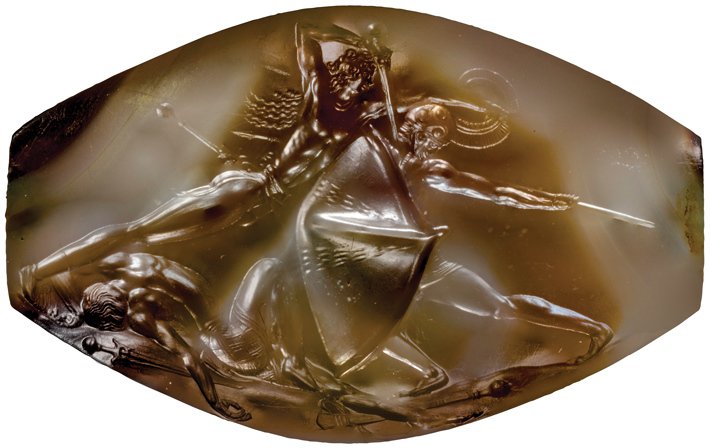
Classics at the University of Cincinnati has again created a world sensation as seen on PBS, BBC, The Discovery Channel, and many more TV channels and numerous newspapers and magazines around the world, now also on the Smithsonian Channel!
For details, see flyer:
MOVIE NIGHT, GRIFFIN WARRIOR!!!
“FOLLOW ARCHAEOLOGISTS [JACK DAVIS AND SHARI STOCKER, UNIVERSITY OF CINCINNATI] AS THEY EXAMINE A TOMB THAT THEY HOPE WILL REVEAL THE MYSTERIOUS ORIGINS OF THE ANCIENT GREEKS.”
— The Smithsonian Cable Channel
“The Griffin Warrior Project has been excavating the area surrounding the Palace of Nestor since May of 2015
The project, which is sponsored by the University of Cincinnati and operates under the auspices of the American School of Classical Studies, follows in the footsteps of Dr. Carl W. Blegen, the Cincinnati-based archaeologist who explored much of the Bay of Navarino region in the mid-twentieth century. In 1939, Blegen, along with his team and Greek counterpart, Dr. Konstantinos Kourouniotis, first discovered the Palace of Nestor, the most completely preserved Bronze Age palace on the Greek mainland. For fifteen seasons, Blegen, archaeologist Marion Rawson, and their team excavated the site, which proved to be a remarkably intact Mycenaean palace. Now, half a century after Blegen’s last season, a University of Cincinnati team has returned to the site to continue excavating.
The ongoing project’s most significant discovery has been the grave of the Griffin Warrior. The unlooted shaft grave contained dozens of intricate seal stones, hundreds of gold and bronze artifacts, and the remains of a prominent Mycenaean nobleman from around 1500 B.C. Its discovery was heralded in the press around the world as one of Greece’s most significant archaeological finds in decades.”
— griffinwarrior.org
